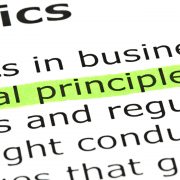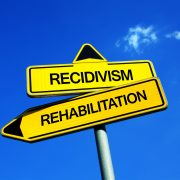Back when the great Phil Knight was building Nike from the ground up, liquidity was a persistent worry for him. More realistically a nightly one. Blue Ribbon’s (the original name for Nike) bank didn’t trust its sales, so it kept a tight credit leash on Knight. On the other hand, the same bank that viewed Knight’s entrepreneurial endeavor as a very risky loan was more than willing to lend to Knight the individualwhen he sought a home loan.
Knight’s dealings with banks rate consideration in light of efforts by central bankers in Europe to boost economic growth with “negative interest rates.” Those central bankers are an odd bunch. They’re convinced that “low interest rates” at banks will power economic activity, but low interest rates paid on deposits signal low-risk lending. Think about it. If banks were truly seeking higher return loans they would be paying more for deposits. They also probably wouldn’t be banks, but that’s a digression.
All of the rate stuff matters when it’s remembered that economic growth is to some degree an effect of surprise. What’s expected to not succeed, and what’s dismissed right up to when it flowers, is rarely – if ever – hatched by low-interest lending. Entrepreneurs, by their very name, believe in a concept that most think has no chance of success. Hence the surprise when they prosper. Still, it’s a reminder that a venture with the potential for surprising upside would never rate a low-interest loan.
What can be done with “cheap credit” is in many ways what’s known. Or what’s recoverable. Recoverable is the operative word here. While what became Nike was largely dismissed by bankers for much of its early existence, housing is known. It’s got a track record of more dependable performance. While start-ups go belly-up with great regularity such that there’s little to recover, with home loans there’s always a house for banks to take back. That’s why home loans are easier and cheaper to attain. Their relatively low-risk nature makes them that way.
Crucial here is that housing consumption is not going to stimulate a boom. It’s been said a lot in this column, but your purchase of a house won’t make you more productive, won’t open up foreign markets for you, and won’t lead to software innovations or cancer cures that elongate life.
All of this requires lots of thought as European central banks work to stimulate economic growth through “negative rates.” According to a Wall Street Journal report, the thinking inside central banks is that if they charge actual banks for parking cash with them, those institutions will instead lend their reserves at a market rate of interest, thus allegedly stimulating the economy. And if they charge individual customers to park their cash, maybe those customers will instead spend the money.
About consumer spending, it’s best to get that out of the way right away: it doesn’t drive economic growth as much as it’s a consequence of it. Investment is what powers economic growth when it’s remembered that investment is all about deriving more productivity from the workers, machines and surprise ideas in existence. If people are spending with abandon, including consuming housing with abandon, growth naturally slows thanks to investment shrinking. It’s no coincidence that the two periods when housing was a top U.S. asset class (the ‘70s, ‘00s) coincided with limp economic activity.
As for banks, that interest paid on bank reserves held within the central bank would factor into bank lending is all one need to know about how little bank lending activity factors into growth. Fairly explicit in banks parking funds at central banks in return for a low rate of interest is that their actual lending is the picture definition of low risk. If not, as in if banks had more dynamic lending opportunities to pursue, it’s not realistic to assume they’d take IOR (interest on reserves) payments over what they could gain by virtue of putting funds on deposit to work in the marketplace.
Basically the lending incentive central bankers feel the need to create – negative interest rates – loudly explains to anyone with a pulse why the negative rate initiative will have nothing to do with economic growth. If banks need a push to cease being paid a prosaic central bank rate of return, it’s a certain sign that they’re not taking much risk with the funds they are lending out. It’s a sign that they’re likely lending to blue chip borrowers for whom capital is already plentiful, and for whom borrowing would be pretty easy with or without “negative rates.” In short, the known that would have access to liquidity would and will still have access to liquidity.
As for the unknowns that represent high risk, high odds of failure, and by extension the potential for surprise, none will benefit from the offense to common sense that is negative rates. How could they? Precisely because they’re viewed as unlikely to prosper, or alternatively, very likely to fail, there’s no reasonable scenario under which they’ll be able to borrow in size. See Phil Knight with what became Nike, and see Silicon Valley today. Rates of interest don’t mean too much there when it’s remembered that there’s not much debt finance to speak of among the businesses with the potential to surprise. No interest rate of return would be high enough for those willing to back what they hope will become Valley ‘Unicorns.’ It can’t be repeated enough that when it comes to economic growth, central banks are a sideshow.
And central bankers continue to not disappoint. Negative interest rates? The very notion speaks to an artificial attempt to create what already exists (low interest lending to concepts with certainty) without improving the economic outlook one iota. True growth is driven by surprise developments that spring from investment in what’s the picture definition of uncertain. In short, negative rates and entrepreneurial endeavor have nothing to do with one another.













